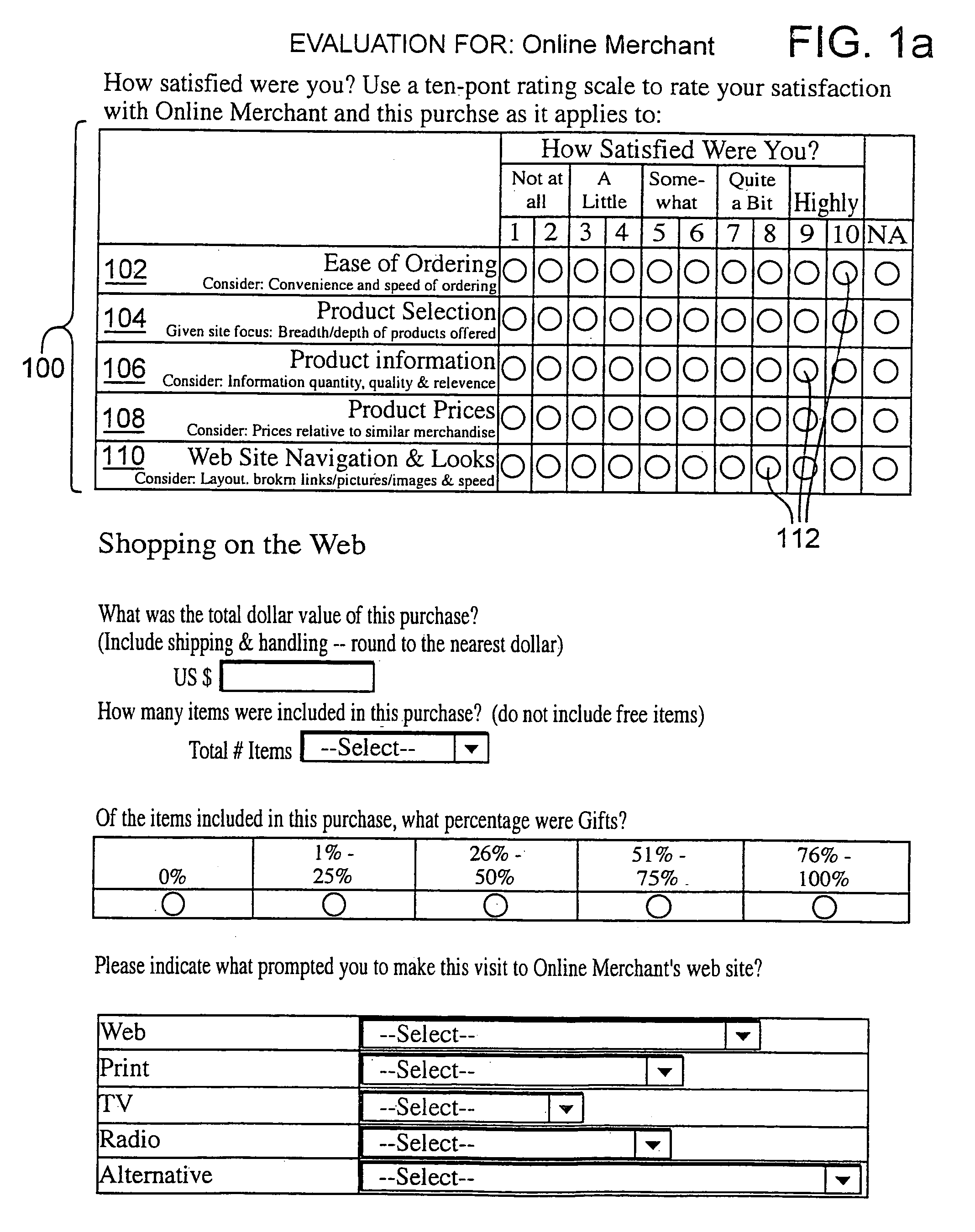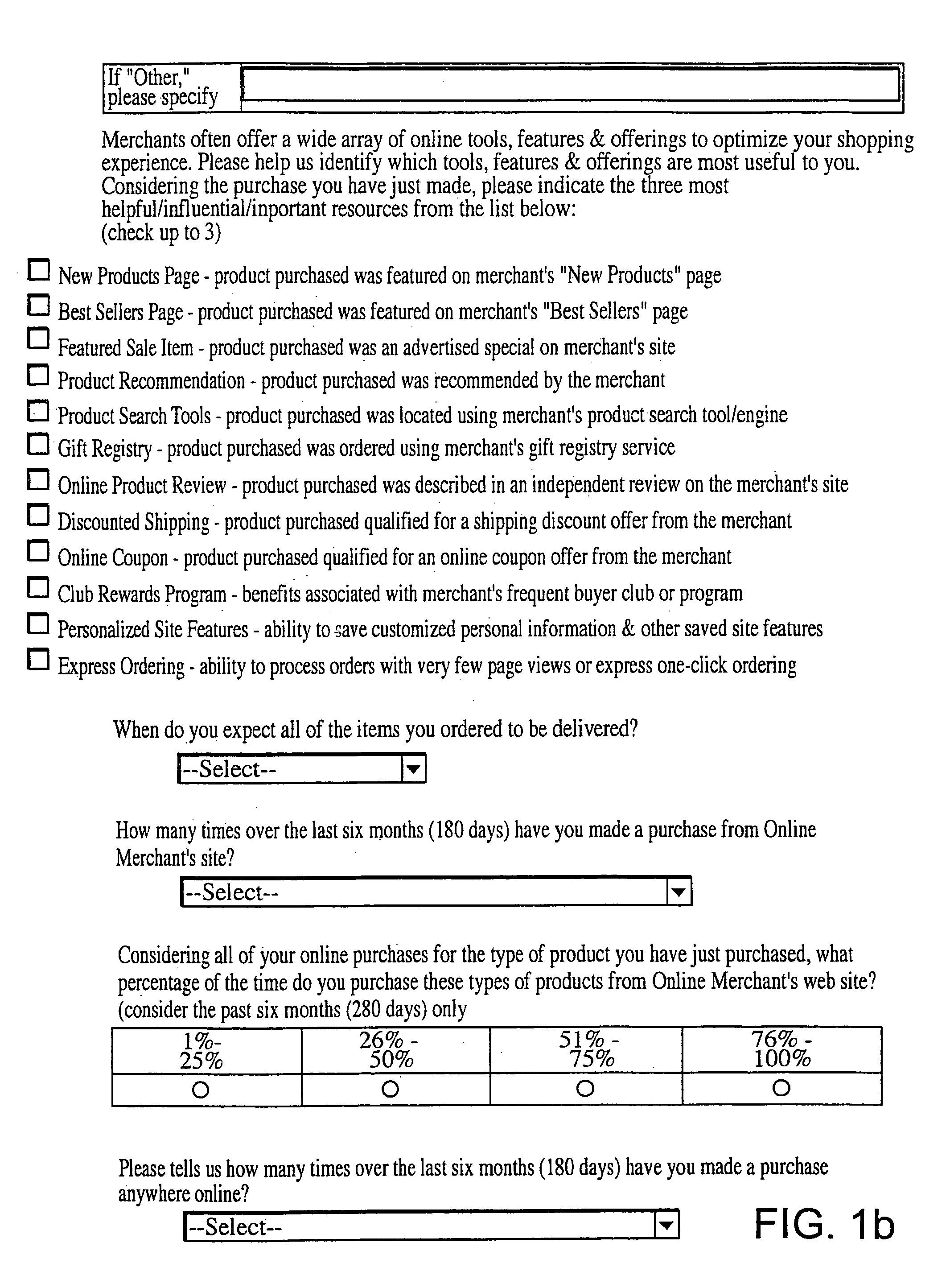System and method for data collection, evaluation, information generation, and presentation
- Summary
- Abstract
- Description
- Claims
- Application Information
AI Technical Summary
Benefits of technology
Problems solved by technology
Method used
Image
Examples
Embodiment Construction
[0065]The present invention is a novel system and method for processing and evaluating data, and generating information relating to networked information retrieval and analysis, planning and control; and particularly e-commerce. The system preferably uses data gathered from or about transactions that occur online. The data may be gathered from any number of sources. It may be directly gathered from providers of goods or services, e.g., merchants, and users of goods or services, e.g., consumers, or other participants in an online transaction. The data may also be gathered from third-party suppliers of previously collected data. The data may be evaluated with respect to transactions with particular merchants, a group of merchants, a group of consumers, or with respect to one or more categories of trade based on data gathered from one or more merchants, consumers, or third-party data sources in one or more trade categories.
[0066]In addition to evaluation of merchants and any other supp...
PUM
 Login to View More
Login to View More Abstract
Description
Claims
Application Information
 Login to View More
Login to View More - R&D
- Intellectual Property
- Life Sciences
- Materials
- Tech Scout
- Unparalleled Data Quality
- Higher Quality Content
- 60% Fewer Hallucinations
Browse by: Latest US Patents, China's latest patents, Technical Efficacy Thesaurus, Application Domain, Technology Topic, Popular Technical Reports.
© 2025 PatSnap. All rights reserved.Legal|Privacy policy|Modern Slavery Act Transparency Statement|Sitemap|About US| Contact US: help@patsnap.com



